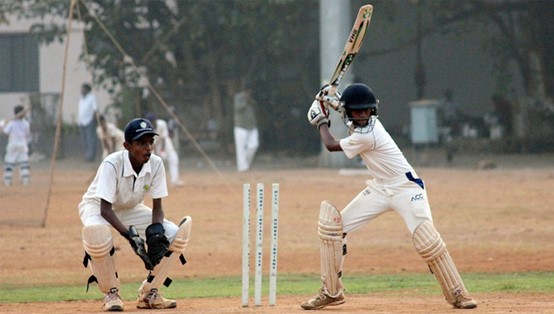 These days, the perceived value of customer surveys is often undervalued and mostly taken into account in the context of enhancing certain aspects of a brand or company.
These days, the perceived value of customer surveys is often undervalued and mostly taken into account in the context of enhancing certain aspects of a brand or company.
Thus, it may come as a surprise that in 2001, customer surveys were closely linked to advancements in cricket as a whole. T20 cricket was born in 2003 as a consequence of the market research survey’s conclusions, which may have prevented the sport from falling into severe decline.
Late 1990s: Quagmire Cricket

Having originated in England around the close of the sixteenth century, cricket is regarded as the national sport of the nation.1.
Even for those with moderately small venues, local county teams have never had much luck selling out their games. Attendance fell by 17%2 in the five years before 2001, and marketing executives didn’t appear to know why.
Even worse, they were at a loss for ideas on how to get new fans to their team’s games.
There were two primary variations of the game at the time:
Five days of testing. Each team plays two frames. Until all innings are completed or five days have elapsed since the match, the sides continue to play. In cricket terms, this is the ultimate.
– One-Day Competition. The two teams engage in a 50-over game. Typically, a match lasts 6-7 hours.3.
The issue is that players’ interest in both versions of the game is waning.
Let’s introduce Stuart Robertson.
The England and Wales Cricket Board’s (ECB) head of marketing at the time, Stuart Robertson, decided to look for a solution on his own.
Understanding the value of opinion surveys, he reached out to the European Broadcasting Corporation (ECB) and the terrestrial broadcaster Channel 4 to convince them to support a vast market research project that would find out how people felt about the game throughout the country.
The first £250,0003 (about $350,000) campaign included thirty focus groups and thousands of customer surveys. Approximately 4,500 surveys were sent to homes directly.4
Because focus groups with children, women, and ethnic minorities were shown to be underrepresented in cricket, the ECB was especially interested in speaking with these groups. In order to learn more about the participants’ opinions on cricket, frequency of match attendance, and reasons for not going to more matches, a series of questions were posed to them.
During their interviews, the following complaints were commonly voiced:
Certain underrepresented groups believe that watching live cricket is “not for them.” Some even mistakenly thought that in order to play, one had to be a member of a club!
– People are often at work or school when matches begin in the early afternoon.
– The games went on for too long.
Despite being lengthy (several hours), games are dull and often result in a tie.
Additional vigilance

The ECB got to work creating a series of customer questionnaires after learning from the focus groups that the structure of cricket matches seemed to be a frequent complaint. In these polls, participants were asked whether they would be interested in going to a match that started in the evening after regular work or school hours and lasted less than three hours.
The concept was overwhelmingly well-liked by survey respondents, particularly those from marginalized groups, and the ECB anticipated that this would be crucial to rekindling enthusiasm for the game.
In fact, the poll found that 19 million people in the UK are neither fans nor detractors of cricket. of them had either never gone to a match or had gone just sometimes.2. All of a sudden, it looked possible to reach a sizable audience of prospective new admirers.
In retrospect, it’s amazing that no one had thought of the concept of a more manageable, shorter game sooner.
The birth of T20 cricket
Robertson presented his research to English cricket officials in the hopes that they would agree that cutting down on game length was essential for drawing in new viewers, but he encountered strong opposition.
In particular, county chairmen and other influential persons were worried that the conventional game of cricket would become less expensive due to a shortened version.
Some, however, were in favour of the notion, and all the county clubs’ marketing directors agreed that the game should be restructured in order to save cricket.3.
Finally, a new Twenty20 tournament was proposed and agreed upon by the eighteen county chairs. After they voted 11–7 in support of the concept, Twenty20 (T20) cricket was established in 2003.
A few of the recently implemented regulations

Some new regulations had to be implemented before this new form of cricket could be played professionally. Robertson was assigned the responsibility of setting up trial matches, formulating trial regulations, and assembling a committee to determine what was successful and ineffective.
The committee was eager to make the game more thrilling and appealing to a larger audience, but they also wanted to avoid deviating too far from the norm and coming off as too gimmicky.
In the end, a few of the trial game’s tried-and-true rules didn’t translate well to the professional T20 game:
The rounds when the number of runs is doubled are known as the “Golden Rounds.”
The Hotseat: An empty seat where the batter behind him must wait.
With all the bells and whistles attached, T20 cricket became a simplified version of the traditional one-day game Twenty20 after these rules were abandoned. Teams would be seated in dugouts adjacent to the boundaries, pop concerts and other forms of entertainment would be offered both inside and outside the stadium, and music would be blasting from the sound system after each boundary.
In addition, fielding teams will be assessed six points for failing to bowl 20 overs in 75 minutes. If the batting team takes too long to be ready to face the ball, they will also be assessed a number of penalties.
Most significantly, since batsmen take more chances and each side has less time to maximize their score, the game is more enjoyable and can be consumed in a shorter amount of time.
rapid rise in popularity

When the Twenty20 Cup officially took the place of the 50+ Benson & Hedges Cup in 2003, attendance skyrocketed.
Tickets for the semi-finals and final, which took place at Trent Bridge on July 19, 2003, sold out quickly. The Surrey Lions prevailed.
An average of 5,327 people saw Twenty20 Cup matches before to that momentous occasion, whereas 1,511 people saw an average of the Benson & Hedges Cup last year.5. Even now, the T20 Blast is a well-liked tournament in England.
Given the recent surge in popularity of cricket in its home country, it seems plausible that the game will continue to gain appeal on a global scale.
Among the noteworthy T20 cricket-related events are:
2004 saw the ladies of England and New Zealand play their first-ever international Twenty20 encounter.
2005: The first international men’s T20 cricket match featured Australia and New Zealand.
– 2007: India participated in and won the first T20 World Cup. 5-2008: The Indian Premier League (IPL) kicks off its first season.
2011 saw the Australian Big Bash T20 League get underway.
The T20 format has been very popular in Australia recently, particularly in India, and has far beyond even Robertson’s wildest expectations.
Because of India’s passion for the league, IPL (Indian Premier League) clubs are now generating enormous profits from sponsorships, ticket and product sales, and television arrangements. With a brand value of over $6 billion6, they can afford to give the world’s greatest players enormous sums. The IPL is becoming even more popular as a result of these players moving to India in large numbers.
Over a billion individuals
 Although cricket purists will always have a special place in their hearts for Test matches, it’s undeniable that T20 is now the most popular format.
Although cricket purists will always have a special place in their hearts for Test matches, it’s undeniable that T20 is now the most popular format.
In addition to drawing more spectators to the sport in nations where it is already well-liked, Twenty20 cricket has also elevated cricket’s profile internationally. Compared to only 12 Test playing nations, there are presently 82 countries7 that have participated in international T20 cricket during the last four years.8
The International Cricket Council (ICC) carried out independent market research in 2018 to ascertain T20 cricket’s level of popularity worldwide. There are reportedly more than a billion cricket enthusiasts in the globe today.
A man’s vision altered the game forever.
Even though it may seem unlikely, a significant market research effort eventually led to the development of contemporary cricket.
Robertson realized in the late 1990s that it was important to ask the appropriate questions of the right individuals and then utilize the answers to craft the sort of cricket that the public eventually want.
Indeed, 39% of fans globally are female, according to the ICC’s most recent global poll, indicating that the first attempt to draw in a new audience was successful.
During the annual T20 Cricket Success interview with cricbuzz.com, former Hampshire chairman Rod Bransgrove recounted how many chairmen had mixed feelings about the idea: The standard method of deciding whether a change in cricket is acceptable is to ask roughly 100,000 people who, through the county chairmen, genuinely believe that their role is to represent their members. Stuart (Robertson) has done a good job of getting any resources to look at non-members.
They failed to consider that they would inevitably be restricting the game’s possibilities by standing in for their members.
Not unexpectedly, given that he has no financial interest in the game’s success and has always been humble about his contribution, Robertson has become a tremendously adored figure in cricket.9.
Robertson discussed the success of his inventiveness in an interview with cricbuzz.com, stating, “Ironically, my kids are the same age as T20. It’s amazing to see them all mature. Introducing something new into the world and seeing it grow, mature, and go on is actually helpful. The overriding adjective is proud.


